 Local author Tim Manners will give a special talk about his book, Schoolboy: The Untold Journey of a Yankees Hero (University of Nebraska Press). Manners, who was a recent guest speaker at the Baseball Hall of Fame in Cooperstown, N.Y., co-authored the book with Waite “Schoolboy” Hoyt, using a trove of records and writings from Hoyt, who passed away in 1984. Hoyt’s improbable baseball journey began when the 1915 New York Giants signed him as a high school junior, for no pay and a five-dollar bonus. After nearly having both his hands amputated and cavorting with men twice his age in the hardscrabble Minor Leagues, he somehow ended up as the best pitcher for the New York Yankees and teammate with such legends as Babe Ruth and Lou Gehrig. You don’t have to be a fan of baseball to be fascinated by Hoyt’s astonishing life story!
Local author Tim Manners will give a special talk about his book, Schoolboy: The Untold Journey of a Yankees Hero (University of Nebraska Press). Manners, who was a recent guest speaker at the Baseball Hall of Fame in Cooperstown, N.Y., co-authored the book with Waite “Schoolboy” Hoyt, using a trove of records and writings from Hoyt, who passed away in 1984. Hoyt’s improbable baseball journey began when the 1915 New York Giants signed him as a high school junior, for no pay and a five-dollar bonus. After nearly having both his hands amputated and cavorting with men twice his age in the hardscrabble Minor Leagues, he somehow ended up as the best pitcher for the New York Yankees and teammate with such legends as Babe Ruth and Lou Gehrig. You don’t have to be a fan of baseball to be fascinated by Hoyt’s astonishing life story!
 Tim Manners is a writer, communications consultant and baseball fan. A magna cum laude graduate of Tufts University with a BA in history, he is a former FM-radio disc jockey, publicist and magazine publisher. Currently an essay specialist with The Manners Group, he is co-author of “Schoolboy: The Untold Journey of a Yankees Hero” (2024) with baseball great Waite Hoyt (University of Nebraska Press) and “Relevance: Making Stuff That Matters” (2008), published by Penguin/Portfolio.
Tim Manners is a writer, communications consultant and baseball fan. A magna cum laude graduate of Tufts University with a BA in history, he is a former FM-radio disc jockey, publicist and magazine publisher. Currently an essay specialist with The Manners Group, he is co-author of “Schoolboy: The Untold Journey of a Yankees Hero” (2024) with baseball great Waite Hoyt (University of Nebraska Press) and “Relevance: Making Stuff That Matters” (2008), published by Penguin/Portfolio.
Arranged by Frank DeLeo
Summary: “Schoolboy” The Life of Waite Hoyt, Yankees Hero and Forgotten Icon
Tim Manners, author and communications consultant, shared the story behind Schoolboy, a memoir he co-authored based on Hall of Fame pitcher Waite Hoyt’s personal papers. Hoyt, once the ace of the legendary 1927 Yankees, lived a life far richer and more complex than most fans knew.
Origins of the Memoir
Anders met Hoyt’s son, Chris, decades ago and only years later learned of Chris’s famous father. When Chris gifted him eight boxes of Hoyt’s writings—including unfinished memoirs, interviews, and letters—Anders unearthed a firsthand account of Hoyt’s life, ultimately crafting a memoir in Hoyt’s own voice.
Early Life and Baseball Beginnings
Born in Brooklyn, Hoyt grew up near Ebbets Field. At 15, he was signed by the New York Giants after impressing them while pitching for batting practice as a high school ballplayer. Despite the excitement, he was sent to the grueling minor leagues where he endured poverty, violence, and exploitation—experiences that deeply shaped him.
Breakthrough with the Red Sox and Yankees
Hoyt’s major league break came with the Red Sox, where he was ironically brought in to replace Babe Ruth in the pitching rotation. He later joined Ruth again on the Yankees, though their relationship was rocky—including a two-year cold war and a dugout fistfight. They eventually reconciled.
Pitching Stardom
Hoyt became the dominant pitcher on the Yankees during the 1920s, with standout performances in the 1921 and 1927 seasons. In World Series play, he held a 1.89 ERA, cementing his reputation as a “money pitcher.” Manager Miller Huggins admired him, but Hoyt’s penchant for vaudeville in the off season and drinking occasionally jeopardized his career.
Life Beyond the Mound
Outside baseball, Hoyt was a vaudeville performer who earned three times his Yankees salary on stage. He had friendships with stars like Mae West and the Marx Brothers and even crossed paths with Al Capone.
A Complicated Family Life
Hoyt married twice, fathered children in both marriages, and astonishingly went 40 years without seeing his wife or children from his first marriage. His family only reunited decades later, following the publication of Schoolboy, which helped bridge that divide.
Radio Stardom in Cincinnati
After retiring from baseball, Hoyt became the beloved voice of the Cincinnati Reds. Known for his storytelling and warmth, he drew larger audiences during rain delays than during games. Despite a public battle with alcoholism in 1945, his sponsor and fans stood by him, a testament to his character and storytelling charm.
Later Years and Unexpected Talents
Hoyt also became a painter in retirement, selling numerous works. He was friends with famed Mexican artist Diego Rivera, who gifted him a painting—Flower Sellers—that was auctioned decades later (the day of his DMA presentation). Hoyt was inducted into the Hall of Fame in 1969, but even then confessed he sometimes wished he’d been a journalist instead.
Legacy and Reflection
Hoyt’s story—of fame, failure, redemption, and resilience—had been largely forgotten, but Schoolboy brought his legacy back to life. Through it, a fragmented family found healing, and fans rediscovered the man behind the stats. Hoyt was a rare figure: a pitcher, performer, broadcaster, artist, and complex human being whose voice still resonates today.

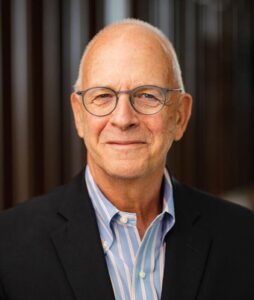 Amos N. Guiora is Professor of Law at the S.J. Quinney College of Law, the University of Utah. He is a Distinguished Fellow at The Consortium for the Research and Study of Holocaust and the Law at Chicago-Kent College of Law, and a Distinguished Fellow and Counselor at the International Center for Conflict Resolution, Katz School of Business, University of Pittsburgh. Professor Guiora is on the Board of the Lauren McClusky Foundation.
Amos N. Guiora is Professor of Law at the S.J. Quinney College of Law, the University of Utah. He is a Distinguished Fellow at The Consortium for the Research and Study of Holocaust and the Law at Chicago-Kent College of Law, and a Distinguished Fellow and Counselor at the International Center for Conflict Resolution, Katz School of Business, University of Pittsburgh. Professor Guiora is on the Board of the Lauren McClusky Foundation.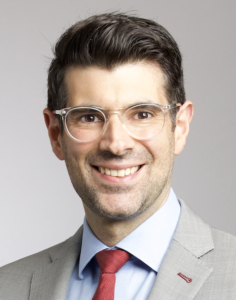 Connecticut, as we all know, is actually a wonderful place to live and raise a family. Yet only half of Connecticut residents said they were proud of the state in a recent survey, even though 73% felt it was a good place to live. Part of the challenge is that Connecticut has not defined itself around its resources and attributes; there are few who can describe what’s wonderful about our state and those in Fairfield County might see it merely as a suburb of New York. Governor Lamont is determined to change that so that people know better what makes Connecticut special.
Connecticut, as we all know, is actually a wonderful place to live and raise a family. Yet only half of Connecticut residents said they were proud of the state in a recent survey, even though 73% felt it was a good place to live. Part of the challenge is that Connecticut has not defined itself around its resources and attributes; there are few who can describe what’s wonderful about our state and those in Fairfield County might see it merely as a suburb of New York. Governor Lamont is determined to change that so that people know better what makes Connecticut special. Aaron Cooper has dedicated his career to pre-k through grade 9 independent school education. He has been a teacher, coach, advisor, and administrator for the last 22 years. Aaron Cooper joined New Canaan Country School in July 2018.
Aaron Cooper has dedicated his career to pre-k through grade 9 independent school education. He has been a teacher, coach, advisor, and administrator for the last 22 years. Aaron Cooper joined New Canaan Country School in July 2018. Juliet Cain is a cofounder of the Darien Pollinator Pathway with Deepika Saksena. The DPP seeks, through events and publications as well as through advocacy at the state and local levels, to help eliminate the use of pesticides in our yards and public spaces and to restore pollinator populations with native plantings. As former Chair of the Darien Beautification Commission, Juliet spearheaded the native plantings on the slopes at the Darien Town Hall.
Juliet Cain is a cofounder of the Darien Pollinator Pathway with Deepika Saksena. The DPP seeks, through events and publications as well as through advocacy at the state and local levels, to help eliminate the use of pesticides in our yards and public spaces and to restore pollinator populations with native plantings. As former Chair of the Darien Beautification Commission, Juliet spearheaded the native plantings on the slopes at the Darien Town Hall. Even while veterans are often welcomed home from combat tours as heroes, they also may encounter long term neglect in health care, disorientation and PTSD, and even homelessness. This presentation will address these challenges, their scale, their conditions, and programs that seek to address them.
Even while veterans are often welcomed home from combat tours as heroes, they also may encounter long term neglect in health care, disorientation and PTSD, and even homelessness. This presentation will address these challenges, their scale, their conditions, and programs that seek to address them.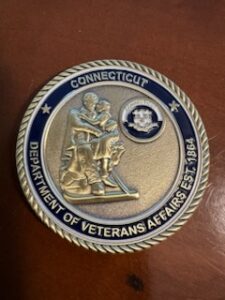 Welch closed by returning to the local history. He spoke about the statue originally placed in Darien, now relocated to Rocky Hill, depicting a Civil War officer comforting a young girl—symbolizing the enduring costs of service and the need to care for veterans and their families.
Welch closed by returning to the local history. He spoke about the statue originally placed in Darien, now relocated to Rocky Hill, depicting a Civil War officer comforting a young girl—symbolizing the enduring costs of service and the need to care for veterans and their families. Dr. Joseph W. Polisi was president of the Juilliard School for 34 years from 1984-2018 and is now president emeritus and chief China officer of the School. Through his experiences at Juilliard and Lincoln Center, Polisi creates in his book a complex tableau which traces the idealistic and determined efforts by John D. Rockefeller, 3rd and his colleagues to create a unique environment where the most prominent performing arts institutions in New York City would be brought together at a venue named Lincoln Center for the Performing Arts.
Dr. Joseph W. Polisi was president of the Juilliard School for 34 years from 1984-2018 and is now president emeritus and chief China officer of the School. Through his experiences at Juilliard and Lincoln Center, Polisi creates in his book a complex tableau which traces the idealistic and determined efforts by John D. Rockefeller, 3rd and his colleagues to create a unique environment where the most prominent performing arts institutions in New York City would be brought together at a venue named Lincoln Center for the Performing Arts. Upon stepping down from his role as president of Juilliard, Polish became Chief China Officer, supervising the overall development of The Tianjin Juilliard School in Tianjin, China. Opened in fall 2020, Tianjin Juilliard offers audition-based programs on pre-college and graduate levels. The graduate school program is taught in English and offers a USA-accredited master’s degree from The Juilliard School. There are also public programs for adult learning and instrumental training, as well as an innovative learning environment, Juilliard Imagination, featuring interactive exhibitions for adults and children.
Upon stepping down from his role as president of Juilliard, Polish became Chief China Officer, supervising the overall development of The Tianjin Juilliard School in Tianjin, China. Opened in fall 2020, Tianjin Juilliard offers audition-based programs on pre-college and graduate levels. The graduate school program is taught in English and offers a USA-accredited master’s degree from The Juilliard School. There are also public programs for adult learning and instrumental training, as well as an innovative learning environment, Juilliard Imagination, featuring interactive exhibitions for adults and children.  Andrew Traub has been a board member of the Harvard Business School Club of Connecticut for 13 years. He has worked on forty projects in social services, education and the arts. Andrew has been board president and chaired several subcommittees. Andrew, a third-generation retailer, worked in this industry for over 40 years as a C level executive of retail and wholesale companies and a consultancy in retail strategy and international brand development. He has been a keynote speaker in both the US and China. Andrew and his wife, Lois, who is a retired attorney, live in Stamford; they have three daughters who live in Arlington, Virginia; Croton on Hudson, NY; and Los Angeles; and four grandchildren.
Andrew Traub has been a board member of the Harvard Business School Club of Connecticut for 13 years. He has worked on forty projects in social services, education and the arts. Andrew has been board president and chaired several subcommittees. Andrew, a third-generation retailer, worked in this industry for over 40 years as a C level executive of retail and wholesale companies and a consultancy in retail strategy and international brand development. He has been a keynote speaker in both the US and China. Andrew and his wife, Lois, who is a retired attorney, live in Stamford; they have three daughters who live in Arlington, Virginia; Croton on Hudson, NY; and Los Angeles; and four grandchildren.

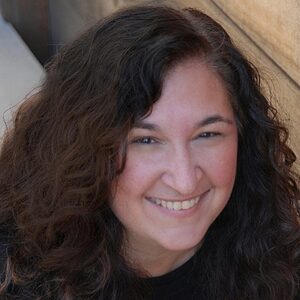 Helene Stapinski is the nationally bestselling author of three memoirs: Five-Finger Discount, Murder in Matera, andBaby Plays Around. She writes regularly for The New York Times; her work has also appeared in The Washington Post,New York,Travel & Leisure, and dozens of other publications. She teaches at New York University and lives in Brooklyn. Helene was the principal author to support Bonnie’s research.
Helene Stapinski is the nationally bestselling author of three memoirs: Five-Finger Discount, Murder in Matera, andBaby Plays Around. She writes regularly for The New York Times; her work has also appeared in The Washington Post,New York,Travel & Leisure, and dozens of other publications. She teaches at New York University and lives in Brooklyn. Helene was the principal author to support Bonnie’s research.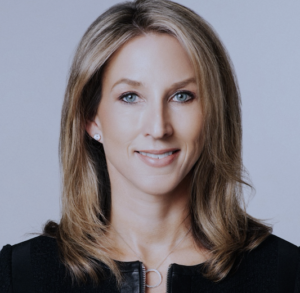 Annelise Osborne is chief business officer at Kadena, a blockchain technology company, where she is focused on upgrading finance. Annelise has over 20 years of experience in finance, credit, real estate, family office, risk, structuring, governance, and digital assets. She was previously head of institutional for Arca Labs, working with companies to drive blockchain innovation through strategic partnerships and advisory services as well as COO of Propellr LLC, company that creates a platform for digitally held assets. Annelise spent 12 years at Moody’s Investor Service running teams in structured finance. She is a thought leader, board advisor, university lecturer and author. Her book, From Hoodies to Suits: Innovating Digital Assets in Traditional Finance, hit shelves in June 2024. Annelise holds an M.B.A. from Columbia Business School and a B.A. in Economics from The College of William and Mary.
Annelise Osborne is chief business officer at Kadena, a blockchain technology company, where she is focused on upgrading finance. Annelise has over 20 years of experience in finance, credit, real estate, family office, risk, structuring, governance, and digital assets. She was previously head of institutional for Arca Labs, working with companies to drive blockchain innovation through strategic partnerships and advisory services as well as COO of Propellr LLC, company that creates a platform for digitally held assets. Annelise spent 12 years at Moody’s Investor Service running teams in structured finance. She is a thought leader, board advisor, university lecturer and author. Her book, From Hoodies to Suits: Innovating Digital Assets in Traditional Finance, hit shelves in June 2024. Annelise holds an M.B.A. from Columbia Business School and a B.A. in Economics from The College of William and Mary.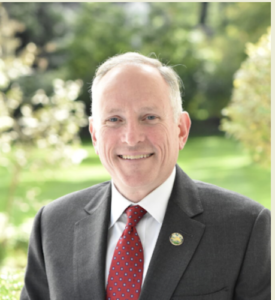 DMA member and Darien First Selectman Jon Zagrodzky will provide an update on Darien town government including overall strategy, Great Island, new commercial developments, flooding investments and the FY 2025 budget process. Jon plans to leave ample time for Q&A and promises that no topic is off limits!
DMA member and Darien First Selectman Jon Zagrodzky will provide an update on Darien town government including overall strategy, Great Island, new commercial developments, flooding investments and the FY 2025 budget process. Jon plans to leave ample time for Q&A and promises that no topic is off limits!